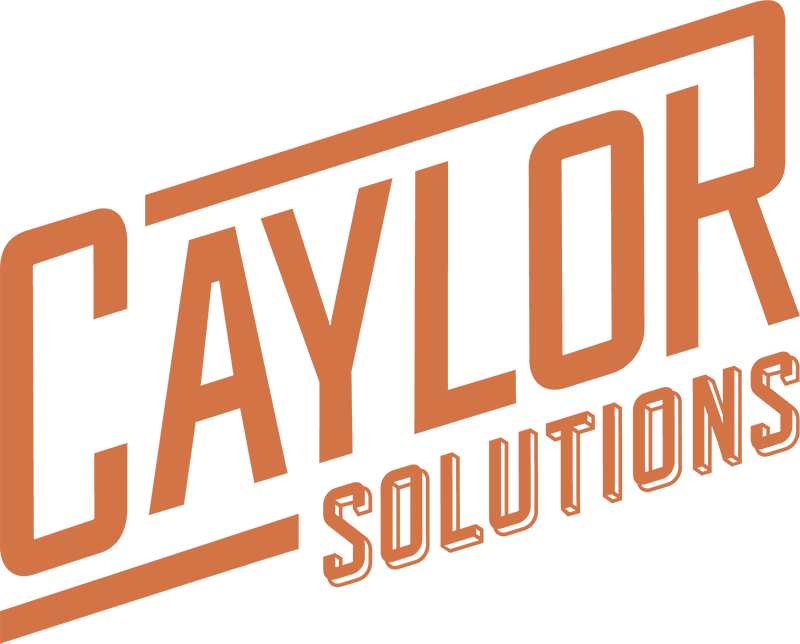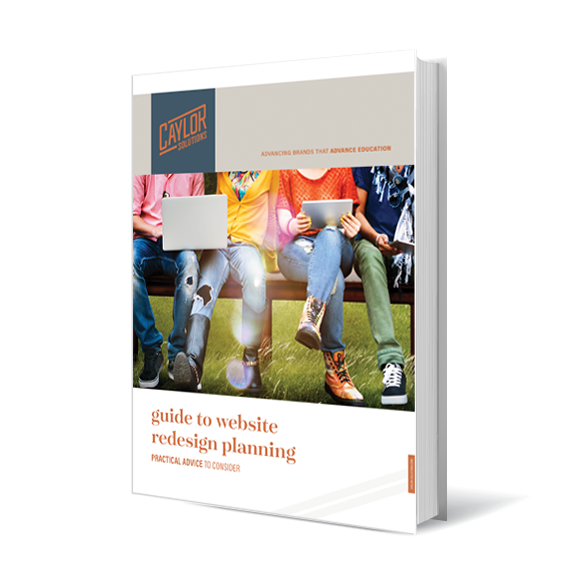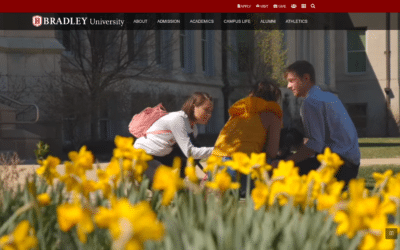Peer-to-peer marketing may be one of the most underutilized strategies for American colleges and universities today.
So you’ve got your call center. You’ve got students making calls in the evenings. That must mean that you’ve got your peer-to-peer marketing strategy all worked out, right?
Not quite.
There’s so much more that can be explored in these relationships.
Unfortunately, we often fail to remember how much Generation Z—and later with Generation Alpha—value deep, personal relationships.
Generation Z tends to think more in terms of “we” rather than “me.”
They tend to think more collectively rather than individualistically. Rather than being a demographic full of mavericks, they tend to be much more concerned with the wellbeing and opinion of the group.
Perhaps that is why several studies show that current students are Gen Z’s most preferred source of information about prospective colleges and universities, after school websites.
I believe this is a largely untapped opportunity for education marketing.
Many current students are ready and willing to answer their fellow Gen Z’s questions through peer-to-peer marketing, and the barrier to entry is much lower than you may think.

The Power of Relationships in Enrollment Marketing
Every marketer will say the holy grail of enrollment marketing is getting prospective students on campus.
If you can get them on campus, you can get them into your school.
It’s important to realize the reason why that’s true.
First of all, they’re not convinced to come to your school while on a campus visit because they’re just blown away by your buildings or by something that they see.
It’s because they’re building the relationships while they’re talking to students or other individuals there like professors and faculty.
During their campus visit, they’re getting the experience of what it’s going to be like. According to George, this trend towards peer-to-peer influence is backed up by the data.
There are hundreds and thousands of studies out there which look at the difference in behavior between generation Z and Alpha compared to previous generations.
It’s all in the trend [of a greater] use of social media and [a greater] use of influencers and looking to peer validation.
In the education industry, it’s no different.
To be successful in this market, or in any market, you need to understand where your audience is and how they’re wanting to engage with you and absorb content. [It’s] so critical that we see these trends and understand them.
We recently did a survey, and the results were quite profound. One of the questions we asked our audience (we got over 800 replies) of prospective students all over the world was…
“What sources of information did you find most useful when researching your study options?”
The first answer was the website.
But a very close second was talking with real students. I mean, it was a really close second! For some categories of students, it was actually the first [decision-making factor].
[After these two factors came] talking with friends and family and cost-comparison websites. Other channels, like social media, were actually quite distant third, fourth, fifth.
And if you added together “talking to friends and families” and “cost-comparison websites,” it still didn’t reach the amount of support that talking with real students got.
Peer-to-Peer Marketing and First Generation Students
Peer-to-peer marketing is a powerful tool when it comes to resonating authentically with Gen Z, but there is a group within Gen Z where it makes even more of a difference.
First generation and minority students seem to need and respond to peer-to-peer marketing the most.
These are often students many colleges and universities are trying to enroll but have a difficult time attracting.
As George’s personal experience with a friend shows, that difficulty attracting these kinds of students is due to a lack of personal connection with the educational brand.
I got really interested in [peer-to-peer marketing] when I was applying to university myself.
For me, [the decision on whether to enroll at Durham University or not] was all about wanting to talk to real students when I was applying. I knew I wanted to study engineering, but I didn’t know what that was going to be like.
I just wanted to talk to real students. [Fortunately,] I was able to do that mostly through my oldest sister, and also, of course, YouTube videos and social media.
But then when I got to university, I had this really profound and interesting conversation that had a real effect on me. It was with this guy called Rob Hollins, who was in my course.
He just turned to me in the lunch queue and said, “Aren’t we incredibly lucky to be here? I just feel so lucky to be here!”
I felt lucky too, but I didn’t feel that lucky!
So we had a really long conversation over lunch. Essentially, this guy went to a [high school] where nobody went on to Durham. He wasn’t able to visit ahead of arriving on campus.
He just had none of the access to real students that I had through my personal connections. That [conversation] was so profoundly useful for me.
I became interested in thinking about how we solve this problem and make sure that everyone has access to learn directly from real students when they’re applying to university.
Rob represents one of thousands of prospective students that don’t already have a relationship with someone in your school, especially if they are a first-gen or minority student.
They need you to create that personal connection.
Bridging the Gap with The Ambassador Platform
Peer-to-peer marketing is a strategy that mobilizes your current students to form relationships with prospective students to help them have that personal connection with your school.
But that’s easier said than done.
So then the question comes, how do you get your students representing you through those [social media and other one-to-one] channels? It turns out, it’s extremely difficult.
How do you make sure that their communications are safe? Because you’re dealing with minors under eighteen.
How do you make sure that ambassadors are incentivized to do that work? Because it’s very hard to track their activity.
Also, how do you maintain oversight and control? Because you don’t want to read every single email. And it’s hard for you to make sure that you’re checking every single content post.
The channels now so commonly used by universities are not built for peer-to-peer. They’re not built for student collaboration.
This is where peer-to-peer platforms like The Ambassador Platform come in, to solve those challenges and enable universities to collaborate with their ambassadors, to scale safely, and to make sure that the students take front and center stage when it comes to the communications and marketing strategy.
The Ambassador Platform, along with other peer-to-peer marketing tools like Unibuddy, can really help you to take advantage of the incredible peer-to-peer connection opportunities you can have through your current students.
Discover more when you listen to the podcast!
Like all of our blog post reviews of The Higher Ed Marketer podcasts, there’s so much more to learn in the podcasts themselves.
Listen to our interview with George Olesen to get even more insights into:
- Empowering students to safely represent your school (6:50)
- Measuring your peer-to-peer campaign performance (14:40)
- Engaging different personas and underrepresented groups (24:40)
- Incentivizing students to participate in your ambassador program (31:32)
Want to Improve Your Digital Marketing Results?
Then you’ve got to know how to write for the web. That’s why we want to send you our popular ebook: Writing for the Web: 7 Secrets to Content Marketing Success for Education Marketers!
With this helpful resource, you’ll learn how to:
- Grab your reader’s attention immediately
- Pull your reader’s attention deeper into your content
- Write so that Google (and other search engines) find you easily
- Increase your website’s conversion rates
In short, you’ll be able to write the copy that makes your digital marketing strategy work for you. Download your copy today!
Featured image via theambassadorplatform.com











